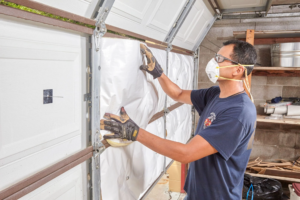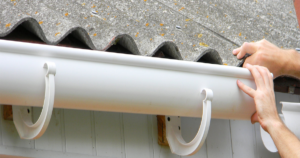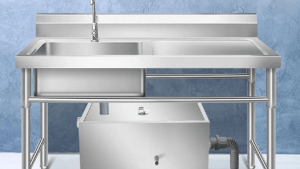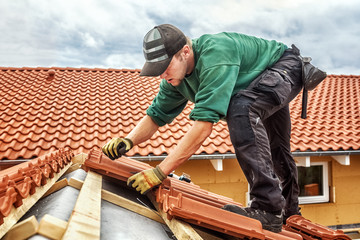Plumbers install, repair, and maintain the pipes that supply water and carry waste away in homes and businesses. They often work in tight spaces and must have physical stamina and dexterity to handle tools.
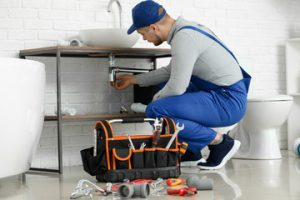
Soft skills are also important for plumbers to have, such as customer service and the ability to explain complex issues in simple terms.
When your home’s sewer line becomes damaged, it can cause major disruptions to plumbing fixtures and appliances. It can also lead to flooding, structural damage, and hazardous mold growth. Fortunately, plumbers have the tools and techniques necessary to repair and replace sewer lines quickly and effectively.
When you notice sewage smells or see signs of a clogged drain, it’s time to call in the professionals. A sewer camera inspection will help identify the root cause of the problem and recommend a solution. A plumber can perform a spot repair or a complete sewer line replacement depending on the severity of the damage and your budget.
Unlike water lines, most of your sewer lines are underground and out of sight. They can become damaged due to a number of factors, including ground movement, poor construction, and seismic activity. Tree roots can also infiltrate pipes and create severe blockages. To prevent these problems, regular sewer line inspections and maintenance are crucial.
Sewer line repairs are often complex and can be expensive. However, there are a number of methods available that can reduce the cost and time to completion. Trenchless sewer repair options like pipe lining and cured-in-place pipe (CIPP) can save you money and time by avoiding excavation. These methods can be used for both residential and commercial properties.
A plumber will assess the condition of your sewer lines and recommend a repair or replacement solution. They will take into account your budget, the age of your pipes, and any other factors that may affect the final decision. A professional plumber will be able to explain all of your repair or replacement options so that you can make an informed choice.
If you have an older home with clay pipes, you might need to consider complete sewer line replacement. These pipes are more likely to break and are less durable than other materials. Fortunately, there are a number of trenchless sewer line repair options available that can minimize the impact on your landscaping and driveway. One of the most popular is the pipe bursting technique, which uses a bursting head to break apart the existing pipe and pull in new piping at the same time.
Water Heater Repair
Water heaters are a vital part of your home’s plumbing system, providing hot water for showers, washing machines, and dishwashers. If your water heater develops a problem, you need a plumber to perform fast and effective repairs. Plumbers specialize in water heater repair, and have the experience and knowledge needed to diagnose problems quickly. They also know how to handle the complicated electrical or gas components of a water heater, minimizing the risk of injury or damage.
When your water heater isn’t producing hot water, there are several causes. A defective thermostat may prevent the unit from heating up, or one of the functional elements could have failed. An older water heater might simply be reaching the end of its lifespan, meaning it won’t be able to heat up your home’s water any more.
If your water is discolored, there’s a good chance that it’s infected with bacteria. This type of water can cause skin and eye irritation, as well as gastrointestinal problems. A plumber will be able to test your water for bacteria and determine the best course of action.
A puddle of water around your water heater can be a sign of a leak. If left unchecked, this can lead to water damage and mold growth. A plumber will be able to identify and repair the source of the leak, which is typically a broken thermocouple or cracked tank.
A leaking water heater can lead to flooding in your home, which is not only costly but also dangerous for your family’s health. Before a plumber arrives, make sure the power to your water heater is turned off by flipping the circuit breaker in the electric service panel. You should also check the connections on your water heater for looseness and wear, as this can contribute to leaking. If you discover that your anode rod is caked with sediment, have a plumber replace it to protect your water heater from corrosion. They’ll also be able to check the condition of your tank and determine whether it needs to be replaced. A plumber will be able to give you an accurate estimate for the cost of the job before starting work.
Clogged Drains
One of the most common services plumbers offer is drain cleaning. Clogged drains are a huge pain, and they can cause significant water damage if left untreated. Fortunately, there are a number of clues that can help you know when it’s time to call a plumber for professional drain cleaning.
Slow-moving water is the most common sign that there’s a clog in your home. This can indicate that food waste, hair, soap scum, or other debris has stuck to the inside of your pipes. If your sink is gurgling or making loud noises, this could also be a sign of a blocked drain.
A backed-up toilet is another surefire sign that you need to call a plumber. This could mean that the sewage is backing up into your home, which is a major health and safety concern. Unexplained puddles in your yard can also be caused by a sewer line clog that needs immediate attention from a professional.
Most plumbing clogs are the result of hair, food waste, soap scum, and other debris that builds up over time. A drain snake can be used to break up and dislodge these items from the pipes, and a plumbing auger can be used to reach deep into a pipe to dislodge larger objects like tree roots. For the most stubborn clogs, a plumber may need to use a power drain cleaner.
While there are many products available at your local hardware store that claim to clear drains, they can be dangerous and are often ineffective. Using these products can actually make the problem worse by irritating the pipes. Instead, try plunging the drain or using a combination of baking soda and vinegar followed by hot water.
Some clogs can be prevented by not flushing anything down the drain except for human waste and toilet paper. Grease, fat, and oil should never be poured down the drain because they will solidify and block the flow of water. Also, remember to wipe down greasy or oily dishes with paper towels before washing them. These simple steps can significantly reduce your risk of a drain clog or blockage.
Water Line Repair
Water line repair is a necessary service for homeowners that can be costly if not addressed immediately. Many signs indicate the need for a water line repair, including low or intermittent water pressure, discolored or strange-tasting water, sudden spikes in your water bill, and unexplained leaks around water meters and main supply lines. In some cases, it may be necessary to replace a water line entirely. This is a project that requires expert knowledge and equipment to ensure minimal damage to your home and a quick and efficient water line replacement.
Water pipes can corrode or break from environmental factors, age, and improper installation. Underground pipes can also shift due to changes in the composition of soil or weather. Fortunately, most of these issues can be repaired with the help of a plumber.
A water line repair can involve everything from sealing a small leak to replacing entire sections of your home’s plumbing. The most important factor in determining the best repair method is to find and locate the source of the leak. This can be difficult and time consuming, but finding the problem early will prevent extensive and expensive damage down the road.
Plumbers are trained to identify and repair problems with your water line, and they have the tools and materials needed to complete the job quickly and efficiently. They can also install new water lines or upgrade your existing system to improve the quality of your home’s water.
It is important to have your water line tested regularly to make sure it is in good condition. A plumber will test the pressure, temperature, and flow of your water to make sure that it is safe for consumption. They can also check the line for signs of corrosion and aging, such as rust or mold.
Homeowners are responsible for the water line from the street to their property, so they should take care of these lines and keep them in good condition. Regular maintenance of your water line can help to prevent issues like low water pressure and clogged drains, which are often caused by worn or broken pipes. You can also reduce the likelihood of these problems by knowing where your water shutoff valve is, keeping trees and shrubs away from your water lines, and using a quality garbage disposal that can handle larger waste items.


